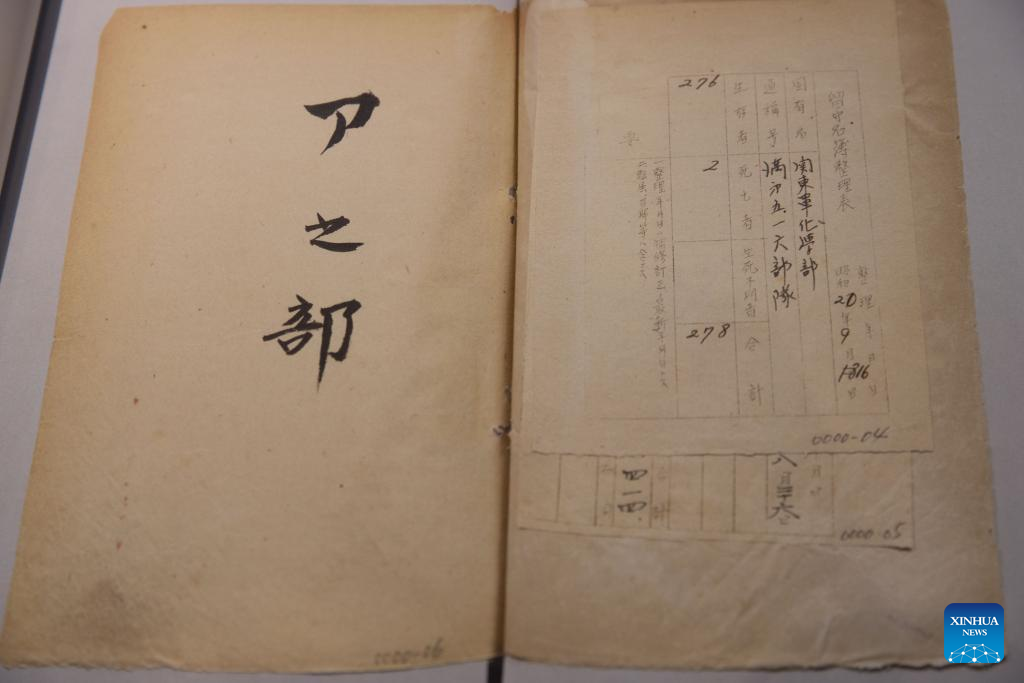
Photo taken on Aug. 13, 2022 shows a roll of a Japanese chemical warfare unit revealed by the Exhibition Hall of Evidences of Crime Committed by Unit 731 of the Japanese Imperial Army in Harbin, capital city of northeast China's Heilongjiang Province. The document contains the real names and personal information of 414 members of Unit 516, which was set up by the Japanese army in May 1939 in Qiqihar City of Heilongjiang Province, according to the exhibition hall. (Xinhua/Zhang Tao)
HARBIN, Aug. 15 (Xinhua) -- A roll of a Japanese chemical warfare unit was revealed for the first time in China on Monday.
The document contains the real names and personal information of 414 members of Unit 516, which was set up by the Japanese army in May 1939 in Qiqihar City of northeast China's Heilongjiang Province, according to the Exhibition Hall of Evidences of Crime Committed by Unit 731 of the Japanese Imperial Army in Harbin, Heilongjiang's capital.
As the base camp of Japan's chemical warfare, Unit 516 developed a range of toxic agents and used them during warfare.
The document was originally held by the Ministry of Health, Labor and Welfare of Japan and then collected by the National Archives of Japan. A photocopy was obtained by a research team of the Exhibition Hall of Evidences of Crime Committed by Unit 731 of the Japanese Imperial Army in April 2021.
"The 237-page file was formed in about 1945, recording in detail the names, dates of birth, household registration, service types, etc. of the 414 members, and their relatives' residences, relationships and other information, exposing the overall size, personnel composition, ranks and other basic historical facts of Unit 516," said Jin Chengmin, curator of the exhibition hall.
"Like germ warfare, Japan's chemical warfare was a premeditated, organized and systematic crime, which violated international morality and human conscience," said Jin, adding that core members of the unit were senior military officers, and the professionals came from medical schools and army hospitals.
The relevant file shows that there was close cooperation between Unit 516 and Unit 731. "The file is an extremely important core archive for the study of chemical and germ warfare waged by Japan during WWII, as well as hard evidence of crimes committed by the Japanese army during its invasion of China," said Jin.
Unit 731 was a top-secret biological and chemical warfare research base established in Harbin as the nerve center for Japanese biological warfare in China and Southeast Asia during WWII.
At least 3,000 people were used for human experiments by Unit 731, and more than 300,000 people in China were killed by Japan's biological weapons. ■
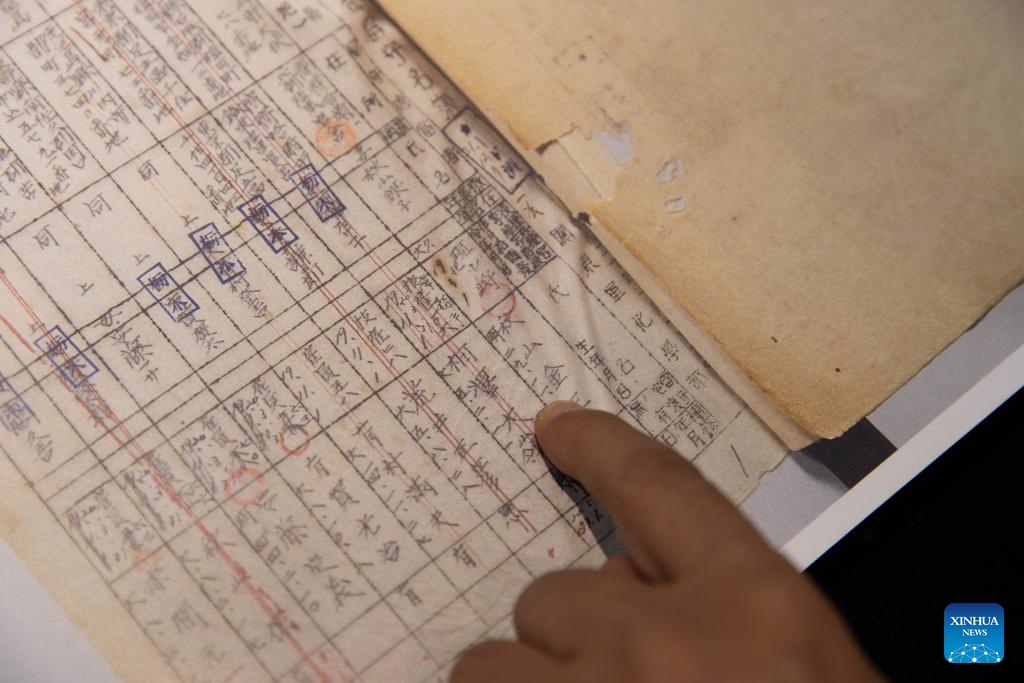
Photo taken on Aug. 13, 2022 shows a roll of a Japanese chemical warfare unit revealed by the Exhibition Hall of Evidences of Crime Committed by Unit 731 of the Japanese Imperial Army in Harbin, capital city of northeast China's Heilongjiang Province. The document contains the real names and personal information of 414 members of Unit 516, which was set up by the Japanese army in May 1939 in Qiqihar City of Heilongjiang Province, according to the exhibition hall. (Xinhua/Zhang Tao)
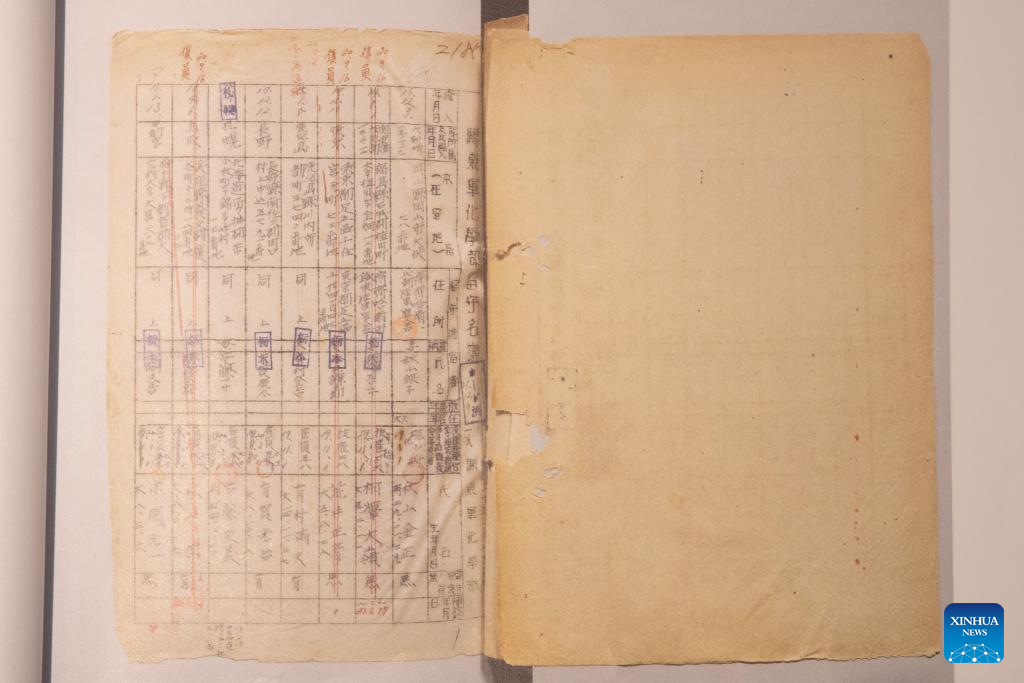
Photo taken on Aug. 13, 2022 shows a roll of a Japanese chemical warfare unit revealed by the Exhibition Hall of Evidences of Crime Committed by Unit 731 of the Japanese Imperial Army in Harbin, capital city of northeast China's Heilongjiang Province. The document contains the real names and personal information of 414 members of Unit 516, which was set up by the Japanese army in May 1939 in Qiqihar City of Heilongjiang Province, according to the exhibition hall. (Xinhua/Zhang Tao)
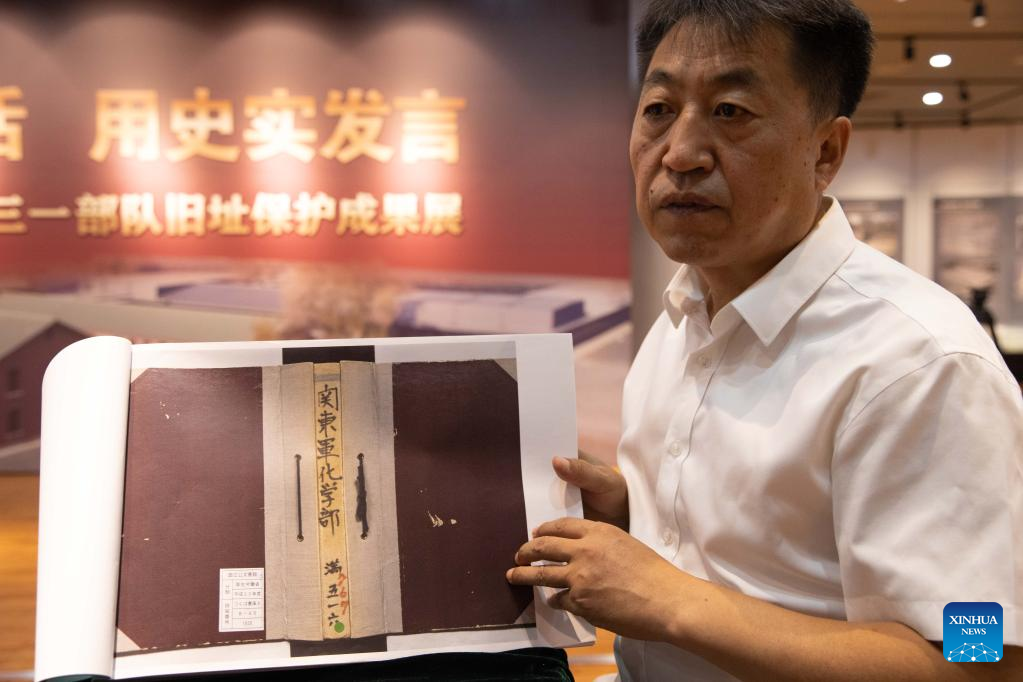
Jin Chengmin, curator of the Exhibition Hall of Evidences of Crime Committed by Unit 731 of the Japanese Imperial Army, shows a roll of a Japanese chemical warfare unit in Harbin, capital city of northeast China's Heilongjiang Province, Aug. 13, 2022. The document contains the real names and personal information of 414 members of Unit 516, which was set up by the Japanese army in May 1939 in Qiqihar City of Heilongjiang Province, according to the exhibition hall. (Xinhua/Zhang Tao)
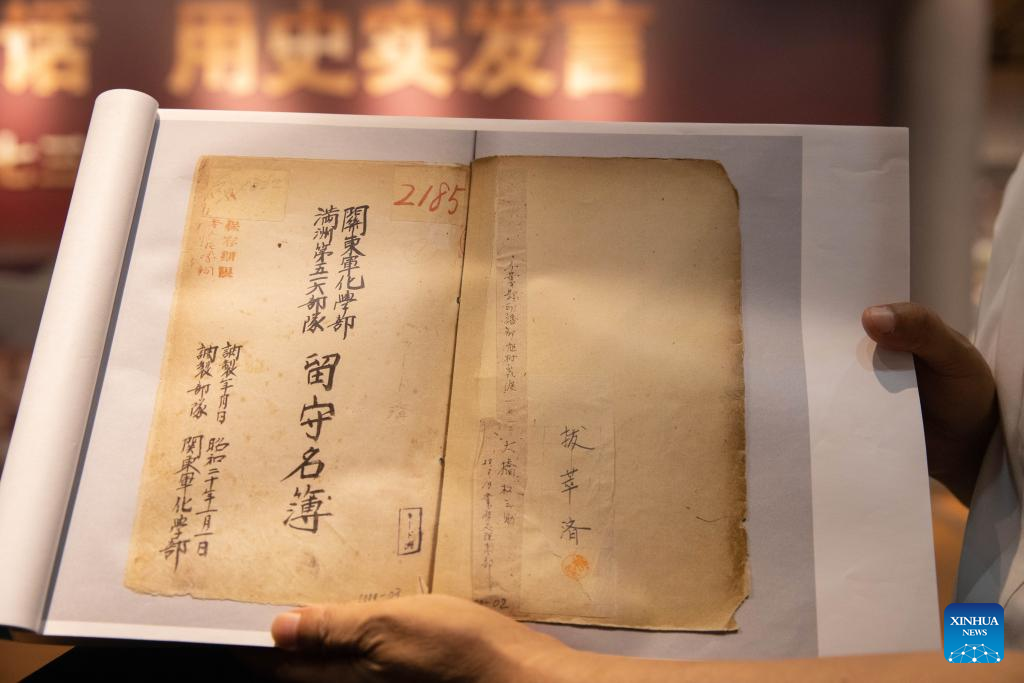
Photo taken on Aug. 13, 2022 shows a roll of a Japanese chemical warfare unit revealed by the Exhibition Hall of Evidences of Crime Committed by Unit 731 of the Japanese Imperial Army in Harbin, capital city of northeast China's Heilongjiang Province. The document contains the real names and personal information of 414 members of Unit 516, which was set up by the Japanese army in May 1939 in Qiqihar City of Heilongjiang Province, according to the exhibition hall. (Xinhua/Zhang Tao)